"About a 9-year-old African girl, found by Protestant missionaries in the French Cameroons and reared in a mission school, who later marries a native teacher and returns to help her village." National Archives.
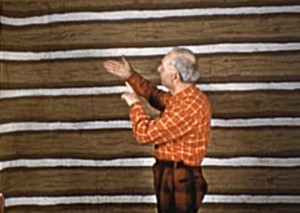
A family permits a lone hunter to stay in their cabin for the night. The hunter entertains the children with magic tricks. Later, the hunter's addition to the cabin sparks a debate over who will sleep in the cabin's beds.
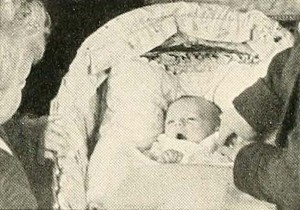
"With Number Three Arrives, John Martin carries on the continuity both of his charming family and of his delightful films of them, so ably introduced by his last year's award winner, A Day with the Young Martins. Here again are the sure feeling for cinematic story technique, the nicely effective angles and the smooth sequencing which belies any need for titles. Added to these deft and familiar abilities of Mr. Martin's work, the current production brings to light a delightful flair for farce comedy by the harassed father and a family terrier rivaling, on a small scale, the best of Hollywood's canine thespians. Once more, Mr. Martin has proved beyond argument that a well planned family film may be of interest to all who see it." Movie Makers, Dec. 1937, 630.
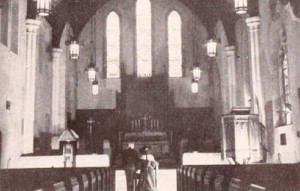
David Bradley's amateur feature film adaptation of Charles Dickens's Oliver Twist.
"J. F. Hollywood, ACL, built his 8mm. film, Opera Night, around a child's dream and which involved magic. The tricks were accomplished by stopping the camera, holding the action, making the desired change in the subject and starting the camera again." Movie Makers, Dec. 1935, 527.
"Joseph F. Hollywood of New York City entered 'Opera Night,' shot entirely indoors with some trick stop action built around his children. A deserving effort that receives honorable mention." American Cinematographer, Feb. 1936, 73.
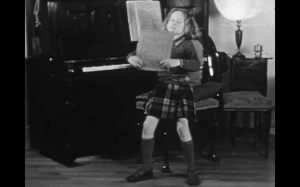
A story of a young boy and girl who play pranks on their maid as their Mother is away from the house.
"On teaching children about money management." National Archives.
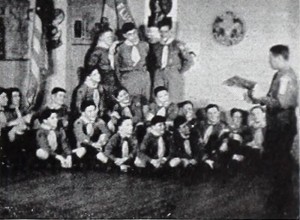
"With its first, full dress training film for Scoutmasters, the Visual Education Service of the Boy Scouts of America embarks, in The Patrol Method, on a new pedagogical path. Instead of presenting the perfect method for emulation, the movie records what happens when Scoutmasters and patrol leaders, with more enthusiasm than shrewdness, do things in ways that invite difficulty. The wiser course is pointed out tactfully, but indirectly, in the film. Here is an unusual employment of the movie medium, but the United States Army and Navy found that it worked in war training. The film is intended for use with a printed outline, and verbal conferences will follow its showings. Directly designed to accomplish a specific teaching task, The Patrol Method does it admirably." Movie Makers, Dec. 1945, 498.
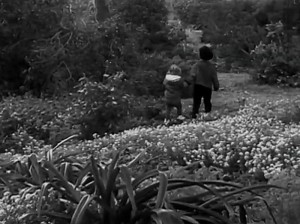
"We open with a little boy standing on a box in a telephone booth; his little friend is too busy or not of a receptive mood for the boy friend. Hurt as he is, he goes into the park and laments his failure to lure the young lady. He is about to resolve a life without women when a young (very young) girl comes into his perspective. His agile mind responds and he sets about to make an impression using many approaches of demure and sophisticated charm. His success was not exactly complete. Finally she visits the "girls" room. Her long delay is too much for the young man, so he makes another telephone call and hurriedly leaves the scene. The commentary is enhanced by the sophisticated French voice. This will be included in the Package" PSA Journal, Oct. 1962, 34.
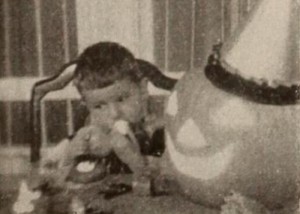
"To those filmers who have had the dubious honor of trying to direct a group of young, obstreperous children who somehow seem to persist in shyly gazing into the camera lens, Harlan M. Webber should be able to give some sound advice. Charming, but not cunning, Pinocchio's Jack-O'-Lantern seems to solve all the usual deficiencies which attend a film starring children. With a sure camera sense, Mr. Webber uses sparkling lighting and imaginative camera viewpoints to bring out the Peter Pan quality which pervades the Halloween party given by his son. The picture opens with startlingly clear shots of the small boy reading a Halloween book and continues with him helping his mother prepare the refreshments for the coming party. In a spirit of understanding and finesse, the filmer follows the antics of the disguised children through the party itself and on to the usual doorbell ringing, where they heinously blackmail the neighbors for candy, cookies and cake. Nostalgically provocative, the film exhibits a buoyant naturalness which would delight any audience." Movie Makers, Dec. 1946, 486.
Total Pages: 15